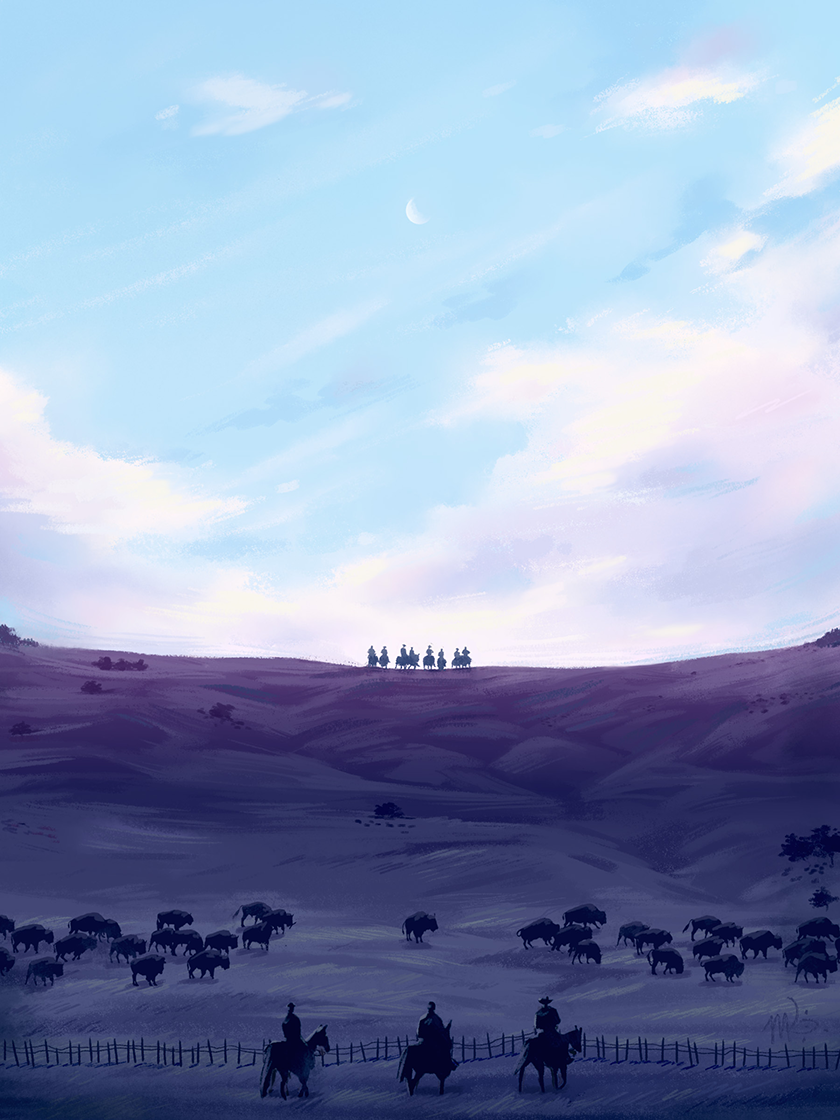This week, we’re looking back at our top stories from a wild year. Today’s newsletter features articles about some of the West’s environmental issues — and the folks trying to solve them.

Montana’s Grand Prairie Experiment
February 21 | The Nature Conservancy and the American Prairie Reserve have different approaches to saving Montana’s plains — but both are successfully preserving huge swaths of grassland.

The Coronavirus Recovery Needs a Green New Deal
July 3 | An economic recovery plan centered on climate change would put the U.S. at the forefront of much-needed global innovation, reduce poverty, and disproportionately benefit low-income areas that suffer most from air pollution, excessive heat, and other environmental issues.

With Buffalo, Native Americans are Restoring a Wildlife Economy
September 30 | The return of bison to Native American nations is one of the greatest active conservation movements in the U.S. There are about 20,000 bison on American Indian reservations around the country. None matches the potential of the Wind River Reservation in Wyoming, where advocates hope to manage thousands of buffalo as wildlife.

Ghost Cats: How the West is Learning to Live with Mountain Lions
May 29 | Protecting mountain lions, especially in the West’s urban and suburban areas, hinges on how we perceive and interface with them as our habitat bleeds into theirs. Saving cougars requires a shift in how we view the divide between nature and cities.

Into Ashes: Is Phoenix Ready for a Future With More Heat and Less Water?
October 28 | Phoenix’s boom has coincided with a warming climate, thus exposing more and more people to exceptional heat and water insecurity. Area officials already have big questions to answer about how to manage heat and water. But the region’s incessant growth begs an overarching question — just how big can a desert metropolis get?

Colville, Washington Survived the Timber Wars. Now It’s Tackling Wildfire
October 23 | A track record of compromise and innovation by timber companies and conservation groups has made the Colville National Forest a leader in both timber production and restoration treatments that mitigate the risk of wildfire.

It’s Time to Plan for Drier Western Rivers
May 8 | Recent research paints a bleak picture for our rivers: Amid one of the worst droughts of the last 1,200 years, we’re seeing less reliable snowfall, which could dramatically affect agriculture in three key Western basins. Now is the time for water managers to utilize these projections and make sound investments in resiliency.

What Role Will Nuclear Play in a Carbon-Free Energy System?
January 24 | The prominence of renewables and fast-improving battery technology have many arguing that nuclear isn’t worth the risk of a meltdown or the waste. But Oregon’s NuScale Power is close to fulfilling nuclear energy’s potential.

How Big Tech is Reshaping the Power Grid
May 22 | By requiring its data centers to run on clean power, Facebook has accelerated New Mexico’s transition away from fossil fuels. It’s a trend playing out across the West, even as federal policies favor legacy energy sources.

Northwest Forests Can Slow Climate Change. How, Exactly, Is Up For Debate
February 14 | Folks agree that Pacific Northwest forests are invaluable carbon sinks — but there’s disagreement on how to manage them. Some in the timber industry believe the best way is to turn forests into lumber, while conservation groups are pushing back, saying the better way to keep carbon locked up in forests is to let them grow and grow.
Share with a friend | Watch a cat video | View previous newsletters

